Realizing Children’s Rights in Brazil
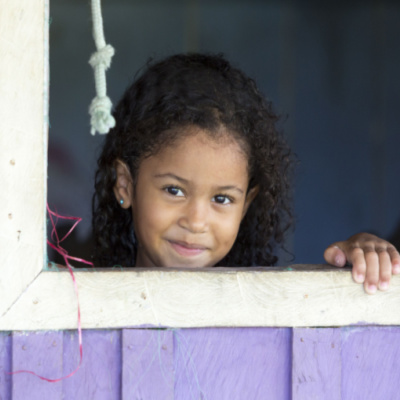
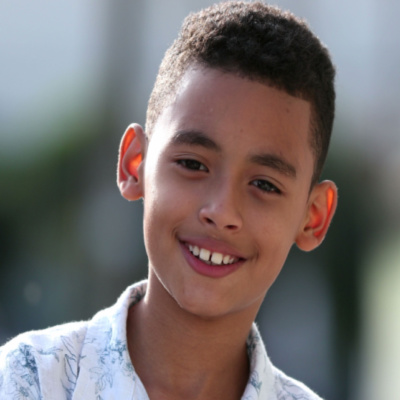
Despite Brazil’s recent economic development, significant portions of the country’s population remain in poverty. In particular, rural areas and city suburbs have not reaped the benefits of nationwide economic progress. This poverty remains a key driver for many of the country’s children’s rights challenges.
Economic hardship deprives children of access to adequate health and sanitation, pushes them towards illicit and dangerous work to generate income, increases the risk of child marriage, sexual abuse and accompanying challenges, provides a gateway for criminal activity and ultimately increases unwanted interactions between children and the law. All these risks prevent children from realising their fundamental human rights.

Children’s Rights Index: 7,76 / 10
Orange level: Noticeable problems
Population: 213 million
Pop. ages 0-14: 20.71%
Life expectancy: 76 years
Under-5 mortality rate: 14.7‰
Brazil at a glance
The Federative Republic of Brazil (República Federativa do Brasil) is a former Portuguese colony, the largest country in South America, and the fifth largest country in the world. It faces the Atlantic Ocean, with 7,400 kilometres of coastline and more than 15,000 kilometres of inland borders in every South American country except Ecuador and Chile (Britannica, 2022). From north to south, Brazil stretches 4,350 kilometres and encompasses a range of savannahs, mountains, tropical and subtropical landscapes and wetlands. Brazil is home to the majority of the Amazon River basin (Britannica, 2022). The country’s official language is Portuguese.
In 1822, after three centuries of Portuguese rule, Brazil gained independence but remained a monarchy until 1889 (World Vision, 2010). In recent years, economic growth has risen with the discovery of offshore oil reserves, making Brazil a newly emerged economic power referred to as “BRICs,” an acronym for Brazil, Russia, India and China (SOS Children’s Village). During the presidential term of Luís Ignacio da Silva, poverty levels had noticeably decreased. In 2003, nearly 38% of the population lived below the poverty line and this figure dropped to 21% in 2011 (SOS Children’s Village).
The Brazilian economy has been built on the cultivation of crops such as coffee, sugar, soya beans and other materials such as bauxite, iron ore amongst other industrial goods. The country is home to hydroelectric and industrial complexes, fertile farmlands and several mineral reserves. However, despite the existence of an abundance of natural resources, a large portion of Brazilians are still living in poverty (World Vision, 2010). Extreme social inequalities exist with a significant discrepancy between rich and poor, with severe poverty in the Northeast as well as within urban areas (World Vision, 2010).
Brazil’s history has led to it being a melting pot of cultures. Across the country, indigenous peoples are outnumbered by Brazilians who have European and African roots (World Vision, 2010). Since colonial times, there has been an increase in intermarriages, leading to more than half of the population being of mixed ethnic background (Britannica, 2022). Brazilians of European descent make up one-half of the population. Mulattoes, people of European and African ancestry as well as mestizos, people of European and Indian ancestry make up two-fifths of the population. The remainder of the population is made up of African, Afro-Indian or Asian descent (Britannica, 2022).
Brazil has one of the world’s highest levels of income inequality in the world, which in turn fuels social inequalities. In response, Brazil’s innovative cash transfer program, known as the Bolsa Família, is the largest cash transfer program in the world and has benefitted approximately 42 million Brazilians. This program aims to alleviate hunger, poverty and social inequalities in Brazil by ensuring that families have the right to food, health care, social assistance and education (Neves, Vasconcelos, Machado et al, 2020).
Status of children’s rights[1]
Brazil has committed to several international instruments for the protection of children’s rights. In 1990, Brazil ratified the Convention on the Rights of the Child (CRC). The CRC was incorporated into national law under Decree No. 99,710 (CRIN, 2019). In 2004, Brazil ratified the Optional Protocol on the sale of children, child prostitution and child pornography and the Optional Protocol on the involvement of children in armed conflict, and in 2008 the Convention on the Rights of Persons with Disabilities (OCHR, 2022).
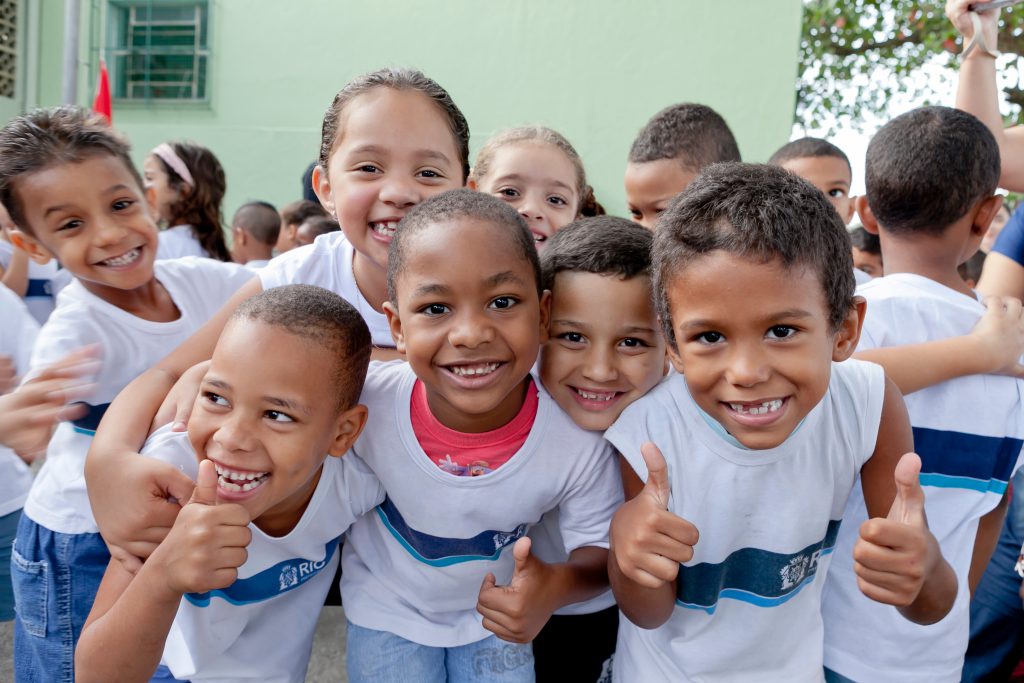
Regionally, Brazil is a member state of the Organization of American States (OAS) and has ratified the American Convention on Human Rights in 1992. This follows the country’s implementation of its landmark Child and Adolescent Statute in 1990 (United Nations General Assembly, 2017). More recently, Brazil’s approach to the protection of children and adolescents is governed by its ten-year plan (2011-2020), National Policy on the Rights of Children and Adolescents, and National Multiannual Plan (United Nations General Assembly, 2017).
These policies are supplemented by concrete strategies which breakdown the country’s targets and objectives, these include: The Convergence Agenda for the Integral Protection of the Rights of Children and Adolescents, Live Young and the Constitution of Strategies in Defence of the Rights of Children and Adolescents (United Nations General Assembly, 2017).
In terms of legislation, Brazil has implemented a trio of laws that collectively protect children against physical punishment and cruel or degrading treatment, criminalise sexual exploitation and enforce policies for protection in early childhood (United Nations General Assembly, 2017). These legal frameworks are bolstered by recent revisions to the country’s National Plan to Fight Sexual Violence against Children and Adolescents and the creation of the Child Labour Eradication Program (PETI) (United Nations General Assembly, 2017).
Child labour receives further attention through the National Plan for the Prevention and Eradication of Child Labour and Protection of the Adolescent Worker, as the country aims to stamp out this heinous practice (United Nations General Assembly, 2017). Under Article 403 of the Brazilian Labour Code, all forms of child labour are prohibited before the age of sixteen. In 2000, Brazil ratified the Worst Forms of Child Labour Convention No. 182 and the Minimum Age Convention No. 138 in 2001 (International Labour Organization, 2010).
Brazil boasts further legislation for the protection of children against sexual exploitation, violence and trafficking. Legal provisions notwithstanding, inadequate enforcement mechanisms continue to hinder the country’s ability to fully realise children’s rights.
Addressing the needs of children in Brazil
Right to education
Under the Brazilian Constitution of 1824, every child is entitled to free primary education, an obligation of the state as a basic right to all citizens in Brazil. The government became actively involved in educational rights after the 1930 revolution in which the system was transformed under Law 5,692/71. The implementation of this law brought about changes that included free and mandatory basic primary education and a unified primary level curriculum that was inclusive of regional differences.
Despite elementary education (between the ages of seven to fourteen) being compulsory and free in Brazil, it has not prevented illiteracy and child labour as many children seek – or are forced to – work to generate household income (State University). One of the main aims of the Bolsa Família program was to increase school enrolment and attendance. Through this, it was hoped that children were less likely to be involved in the labour market (Brauw et al, 2012). Between August and September 2016, 14.6 million children benefited from the program through increased school attendance (United Nations General Assembly, 2017).
Right to health
Young women and girls disproportionately face an array of health risks in Brazil. With abortion largely prohibited – and given the prevalence of child marriage and violence against women – adolescent pregnancy is a concern and greater education is required for young girls (FIGO, 2019). With the median age of sexual consent estimated to be around seventeen, greater efforts must be made to protect young women against sexual risks and support them through pregnancy as necessary (CSP, 2020).
In addition to child-bearing-related risks during ordinary times, the government elected to suspend contraception and legal abortions during the onset and development of the Covid-19 pandemic, further placing girls at risk (Human Rights Watch, 2020). This decision undermined previous positive work conducted by the government to introduce new health and education policies to public bodies, aiming to educate young girls on the risks of early sexual encounters (Figueiredo, 2016).
Up to this point, Brazil was rolling out widespread educational programs while simultaneously enhancing public health capacity. By 2012, the country had successfully achieved the target set in the Millennium Development Goals by reducing infant mortality by 70% between 1990 and 2012 (United Nations General Assembly, 2017).
Although Brazil has made HIV/AIDS testing kits readily and freely available for everyone in the country, nearly a million people in the country are living with the disease. (Avert, 2019). Gender-based violence and stigma continues to enable the spread of HIV/AIDS and the emergence of new infections (Avert, 2019).
Pervasive and broader health concern in Brazil is child malnutrition. Recognising the close links between poverty and malnutrition, the government implemented the NutriSUS strategy in 2014 alongside a parallel framework for the promotion of breastfeeding and healthy complementary feeding for children (United Nations General Assembly, 2017).
Right to clean water and sanitation
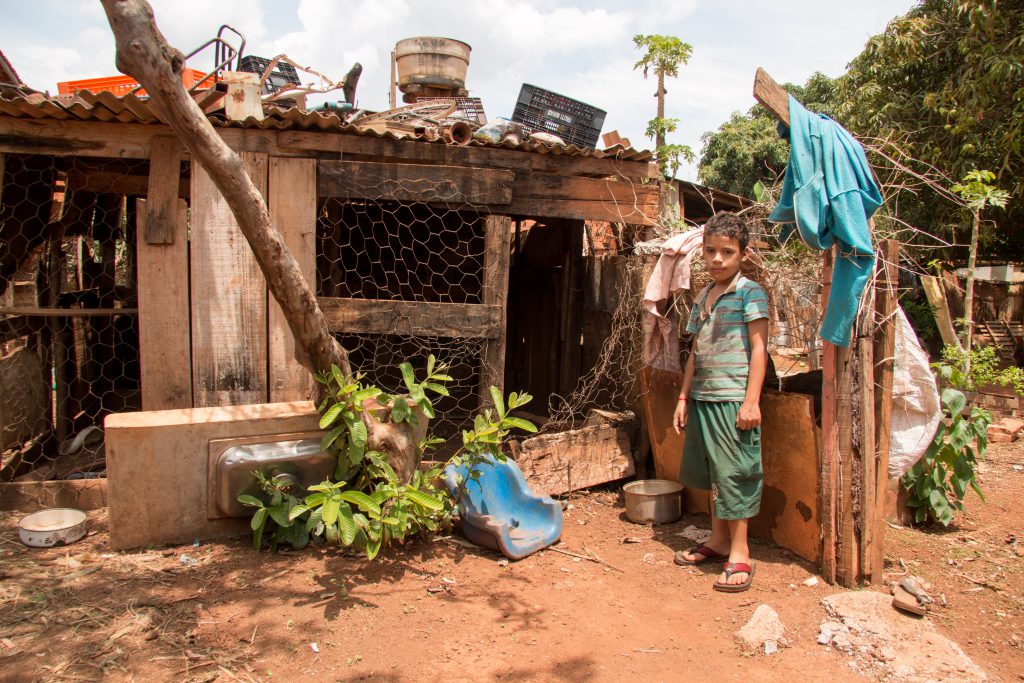
Despite the country’s economic strength, wealth disparities in Brazil mean that 1.2 million people are still without access to safe water, while a further 20 million do not have access to adequate sanitation (Water, 2021). This situation is particularly concerning in the wake of ongoing diseases such as Covid-19 and is what prompted Brazil’s ‘Water Week’ in 2020: a cross-sectoral collaborative event designed to address the country’s water challenges (World Bank, 2020).
While the country has attempted to encourage and promote greater water, sanitation and hygiene (WASH) practices via campaigns, work needs to be done to mobilise financial resources to areas where access to good WASH is still sparse (UNICEF, 2020). A recent UNICEF study showed that children are among the most affected victims of poor WASH in the country, with only 39% of schools across the country having adequate hand-washing facilities (World Bank, 2020).
In 2020, the government established and implemented a new Water and Sanitation Legal Framework to encourage public-private partnerships (Government of Canada, 2020). The mechanism aims to treat sewage and waste to reuse accessible water, reduce water losses and provide water access to remote areas (Government of Canada, 2020). Ultimately it is hoped that 99% of the country will have access to potable water by 2033 (Government of Canada, 2020).
Right to identity
Brazil is taking positive steps towards ensuring all children are able to realise their right to identity. Specifically, through the National Mobilisation for Birth Certificates initiative, the country has been able to lower the national average of unregistered births by over 50% (United Nations General Assembly, 2017). Through more efficient registry offices, enhanced national information systems as well as greater monitoring at health clinics and hospitals, the country has been able to raise awareness on the importance of birth registration across indigenous, rural and city-based communities (United Nations General Assembly, 2017).
Risk factors → Country-specific challenges
Sexual exploitation
Brazil is a country that is heavily affected by child sexual exploitation and trafficking. The country is a source, transit and destination country for trafficking (US Department of State, 2021). It is also considered to be a country with the second highest rates of child sexual exploitation in the world (Conectas, 2020).
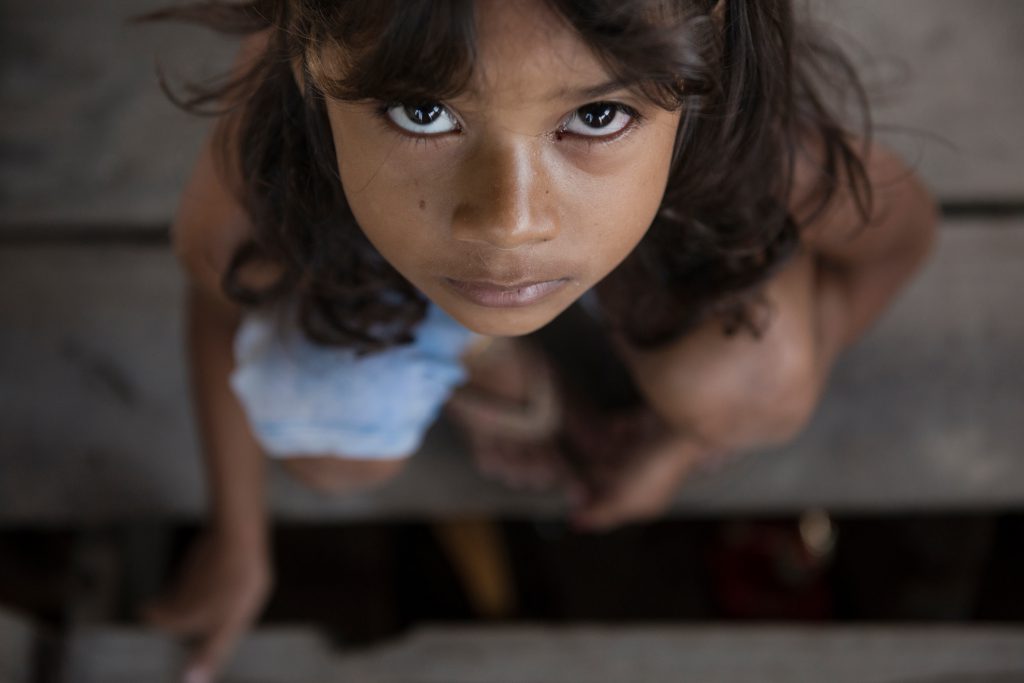
Driven by endemic poverty across and throughout the country, girls often surrender themselves to sexual exploitation as a way to make money (Townsend, 2016). Sexual exploitation was the second highest crime reported against children in 2016. As a result, the country has built up an unfortunate reputation as a desirable destination for sex tourism (Townsend, 2016). Weak and incomplete legal frameworks are partially to blame for this phenomenon with existing national policies having set the age of consent at fourteen and failing to clearly distinguish consensual sex from rape (Townsend, 2016).
Brazil has failed to set a clear and consistent tone to outlaw the practice. Prostitution is only permitted for those over the age of eighteen, however case law from the last decade showcases court decisions in which men have been found not guilty of rape with girls as young as twelve years old (Townsend, 2016). Similarly, legal wording fails to define the acute differences between sexual exploitation and prostitution, placing sex workers at great risk of physical and emotional exploitation (Townsend, 2016).
Child prostitution can also be a gateway to human trafficking as sex tourists feel they can lure vulnerable girls abroad with the promise of a more prosperous future (Townsend, 2016). In this position, women are frequently trafficked illegally, without valid identification and therefore unable to survive in their destination countries without the oversight of their traffickers (Townsend, 2016).
Child trafficking
Although Brazil has ratified the United Nations Palermo Protocol to Prevent, Suppress and Punish Trafficking in Persons Especially Women and Children (The Palermo Protocol) and other relevant international conventions, the county’s domestic legislation is insufficiently implemented. Despite the existence of a Statute on the Child and Adolescent; National Plan to Combat Human Trafficking; and National Plan to Combat Sexual Violence Against Children, the country’s systems are ill-equipped to deliver against lofty targets. Brazil’s Child Guardianship Councils (CGS) – designed to inform public policies and guarantee child rights – are insufficiently funded and lack the expertise or resources to realise comprehensive protection (Dolby, 2018).
In the wake of Covid-19, a U.S. State Report shows reduced resources for relevant government institutions is likely to further undermine child protection and enable child trafficking. In the report, Brazil is ranked as a Tier 2 country failing to fully meet the minimum standards for the elimination of trafficking (US State Report, 2021). Since the onset of Covid-19, the country decreased its law enforcement efforts to combat traffickers, as well as downscaled its work to prevent trafficking from occurring (U.S. State Report, 2021). Reduced counter-trafficking capacity, combined with economic hardship, a pervasive culture that sexualises girls and further discrimination based on race and other factors paints a bleak picture in the content of child trafficking (Dolby, 2018).
Concerningly, Brazil also boasts the fastest growing online population in the world, making vulnerable girls more accessible to predatory traffickers abroad and generating new avenues for the facilitation of child trafficking (Dolby, 2018).
Child labour
Child labour is deeply rooted in Brazilian society. Typically, children are engaged in the agriculture sector and are made to harvest sisal, rice, cocoa, açaí, and sugarcane amongst others, process cashews and cassava flour as well as work in stone quarries. Within the service sector, children are involved in street work, selling alcohol, domestic work, working in markets and garbage scavenging. Children are subjected to the worst forms of child labour including forced commercial sexual exploitation and are exploited by gangs to perform illicit activities such as drug or human trafficking (US Department of Labour, 2020).
Since the COVID-19 pandemic, the number of children engaged in child labour has increased. The Special Secretariat for Social Security and Labour, in 2020 reported a 271% increase in the number of children engaged in child labour across Brazil. It was established that there was an increase in the number of children in street work and begging, pointing to a strong link between rising levels of poverty and the prevalence of child labour. Given the economic drivers of child labour, more work must be done to stamp out the practice and provide alternative sources of livelihood.
Violence against children
In global rankings, Brazil is consistently identified as one of the most dangerous countries for young women and girls due to exceptionally high levels of gender-based violence. Data from 2016 suggests that over twelve women are killed per day in the country (Wilson Center, 2021). More recent information states that 67% of victims of physical violence in the country are women and every seven hours a woman dies due to femicide (Wilson Center, 2021). A local NGO research indicates that four girls under the age of thirteen are raped every hour in Brazil (CNN, 2019).
Analysis of the trends of these statistics gives reason for deeper concern. Following the onset of Covid-19 in 2020, data from the World Bank demonstrated a 22% increase in femicide and a 27% increase in violence against women (World Bank, 2020). These alarming statistics exist despite the presence of numerous recent laws designed to end gender-based violence and support victims. The Law of Femicide and Joana Maranhao – both from 2015 – enable minors to report sexual abuse and criminalise femicide as a distinct form of homicide (Wilson Center, 2021). Further, in 2021, Law 14188 was introduced to ensure psychological violence and is also present in the country’s penal code (Wilson Center, 2021).
In addition to seemingly stringent legal provisions, Brazil established a program against domestic violence in 2021 entitled Red Signal designed to establish communications channels to support victims of domestic violence as quickly and efficiently as possible (Library of Congress, 2021). Despite these efforts, inconsistent implementation and weak enforcement mechanisms continue to limit the effectiveness of the country’s efforts.
Discrimination
The indigenous children of Brazil are amongst the most vulnerable groups and face extreme marginalisation. Since the colonisation of the Portuguese in the 1500s, the indigenous people of Brazil have struggled to retain their rights, particularly their rights to their ancestral land, culture, language, family, food and prayer (Langlois, 2020). In the south-western state of Mato Grosso do Sul, in Dourados indigenous reserve (a Brazilian municipality) many indigenous children are forcibly taken from their homes and placed for adoption. The Dourados is one of seven reservations that was established between 1910 – 1928, home to the Kaiowá and Guarani indigenous groups (Langlois, 2020).
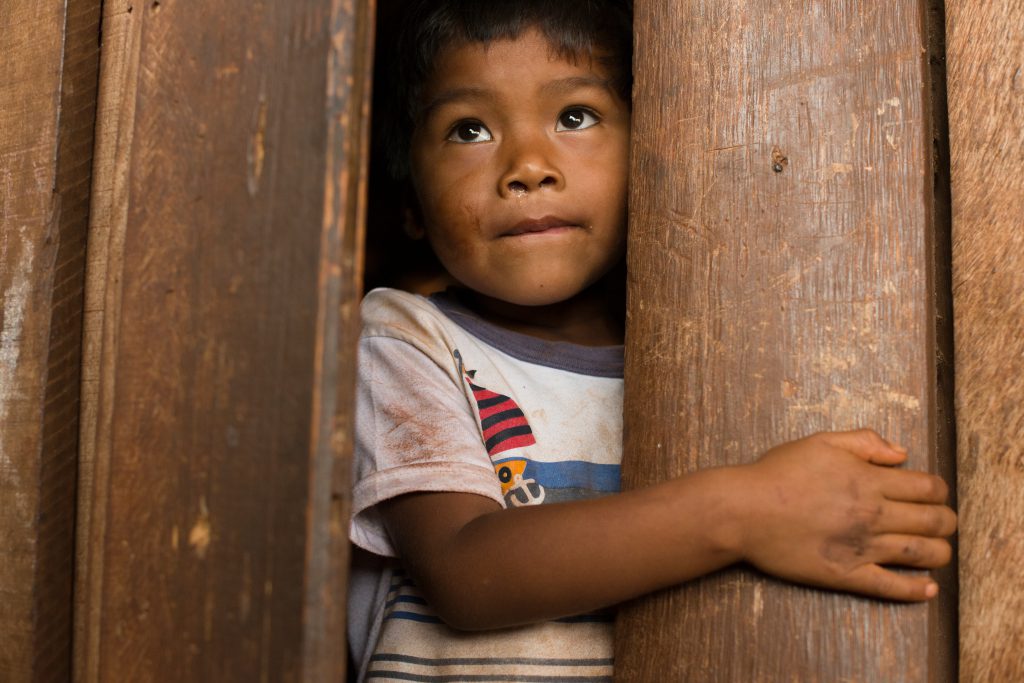
These children are often taken away from their tekohas – their families and communities – and put into care homes where they are forced to unlearn their customs and culture and adapt to a more modern way of life (Langlois, 2020). Being pushed away from the tekohas has made it more difficult for indigenous families to live, hunt, fish, pray and has further disconnected them from their culture (Langlois, 2020). Under Brazilian national law, children living in care should not be there for more than eighteen months, however, they often stay longer. Indigenous children can only be adopted by non-indigenous families if all other avenues have been exhausted (Mendes, 2018).
In 2019, Brazil’s National Indian Foundation (FUNAI), cut their support to the indigenous people living in Mato Grosso do Sul, stating that it was not officially recognised as indigenous land. This decision has given courts another reason to forcibly take indigenous children away from their families (Langlois, 2020).
Child marriage
As of 2019, Brazil hosts the fourth largest number of child brides in the world, with 36% of girls across the country married by the age of eighteen (UNICEF, 2019). Prior to a legal amendment in 2019, children under the age of sixteen could be married off if they fell pregnant or had older sexual partners accused of rape (Plan International, 2019). Following the passing of new laws, child marriage is largely banned for children under sixteen, although exceptions still remain for sixteen – and seventeen-year-olds who can marry with the consent of valid legal guardians (Plan International, 2019).
Contrary to common misconceptions, child marriage is prevalent in urban and rural areas of Brazil, illustrating a widespread cultural acceptance of the practice (Plan International, 2019). Child marriage is driven by an underlying subjugation of women and promotes the belief that women are inferior to men. Girls forced into child marriage are more likely to fail to complete school, live in poverty, fall pregnant and experience complications during childbearing (Plan International, 2019). Victimised girls are also more likely to experience domestic abuse and sexual violence, putting both their physical and mental health at risk (Plan International, 2019).
Juvenile justice
Brazil has one of the world’s largest prison populations (Yamamoto). There are roughly half a million prisoners currently being detained in the country – with 59% of these detainees between the age of eighteen and twenty-nine (Yamamoto). Beyond youth prisoners, 21,000 children are being held in detention facilities under the country’s socio-educational systems (Human Rights Watch, 2019). The high number of adolescent and youth detainees speaks to both the ways in which urban violence and poverty specifically affect younger demographics as well as the cultural willingness to detain young offenders (Yamamoto).
Since 2015, there has been an increasing number of children in young offender institutions in Brazil. The number of young offenders is expected to continue to rise if the age of criminal responsibility is lowered from eighteen to sixteen years – a subject that has been debated in the country since 2015 (UN OHCR, 2016). A majority of the crimes committed by young offenders are robberies or drug trafficking-related activities, both crime types which inherently prey on vulnerability and poverty (Bowater &Moraes, 2015).
Contrary to on-the-ground realities, Brazil’s legal framework presents and describes comprehensive protections for youth offenders who come into contact with the law. Written in compliance with the CRC, the country’s Federal Constitution and Statute of the Child and Adolescent collectively enshrine comprehensive protection for children’s rights. Read together, these documents mandate specific child-centric procedures for dealing with children who encounter legal systems and define the deprivation of child liberty as a last resort and ‘exceptional response’ (Yamamoto).
Provisions notwithstanding, youth accused of offences in Brazil are seldom able to access quality legal defence council, making it difficult for them to receive access to a fair trial. Furthermore, as there is limited national precedent for the sentencing of young offenders, judges and prosecutors are frequently swayed by sociocultural biases and negative perceptions of children from vulnerable demographics (Yamamoto).
Written by Vanessa Cezarita Cordeiro
Last updated on 27 February 2022
References:
Avert. (2019). “HIV and AIDS in Brazil”. Retrieved from Avert, accessed on 19 February 2022.
Burns, E.B, (2022, February 14). “Brazil.” Retrieved from Britannica, accessed on 18 February 2022.
Neves, J., Vasconcelos, F., Machado, M., et al. (2020, November 30). “The Brazilian cash transfer program (Bolsa Familia): A tool for reducing inequalities and achieving social rights in Brazil.” Retrieved from Global Public Health An International Journalfor Research, Policy and Practice, accessed on 22 February 2022.
Santos, R., Borges, G.M., de Campos, M.B., et al. (2020, January 9). “Indigenous children and adolescent mortality inequality in Brazil: What can we learn from the 2010 National Demographic Census?” Retrieved from Social Science and Medicine – PopulationHealth, accessed on 20 February 2022.
UNICEF. (2019). “Child Marriage”. Retrieved from UNICEF, accessed on 19 February 2022.
[1] This article by no means purports to give a full or representative account of children’s rights in Brazil; indeed, one of many challenges is the scant updated information on Brazilian children, much of which is unreliable, not representative, outdated or simply non-existent.

